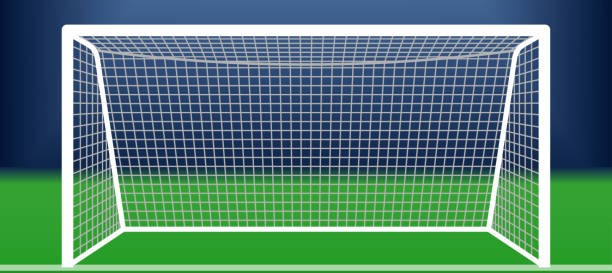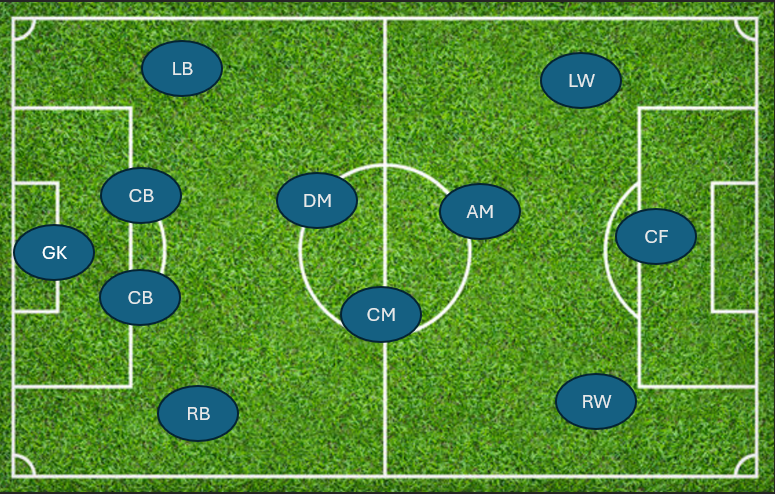













FOOTBALL TACTICS.

Football tactics are strategies and formations that teams use to gain a competitive advantage on the field. Tactics encompass how teams are positioned, how they attack, defend, transition between phases of play, and manage the game. A well-devised tactical plan can influence the flow of the game and maximize a team's strengths while minimizing its weaknesses.
Here’s an in-depth breakdown of football tactics:
Formations:
-
▫ Formations describe how players are organized on the field, determining how a team is set up in terms of attack and defense. Formations are described using a sequence of numbers representing different lines of players, such as defenders, midfielders, and forwards. For example, a 4-3-3 formation means 4 defenders, 3 midfielders, and 3 forwards.
Common Formations:
-
▫ 4-4-2: A balanced formation with 4 defenders, 4 midfielders, and 2 forwards. It’s traditionally used for strong defensive structures and quick transitions.
▫ 4-3-3: A more attacking formation with 4 defenders, 3 midfielders, and 3 forwards. This formation is designed to dominate possession and create width in attack.
▫ 3-5-2: Involves 3 central defenders, 5 midfielders (often with wing-backs), and 2 forwards. It provides strength in midfield and wide areas but requires strong defensive organization.
▫ 5-3-2 (or 3-4-3): Three center-backs and two wing-backs who defend and attack. This setup is useful for teams that want defensive stability and to attack through the wings.
▫ 4-2-3-1: Popular for its flexibility, this formation uses 4 defenders, 2 holding midfielders, 3 attacking midfielders, and 1 striker. It allows a team to defend with solidity but also attack with multiple forward options.
Attacking Tactics: Teams adopt various strategies to break down opposition defenses and create scoring opportunities. Attacking tactics depend on the team's style of play, formation, and strengths of their players.
Key Attacking Strategies:
-
▫ Possession Football: This involves keeping the ball for long periods, patiently building up play, and wearing down the opposition defense. This style, emphasizing short and precise passes.
▫ Counter-Attacking: Teams defending deep and waiting for opportunities to quickly break forward when they regain possession. Counter-attacking requires pace, direct passing, and quick transitions. It is commonly used by teams that prefer not to dominate possession.
▫ Direct Play: Focuses on moving the ball quickly upfield with long passes and crosses to tall strikers or wide players. This approach is more direct and often relies on physical players.
▫ High Pressing: Involves pressing the opposing team high up the field, trying to force mistakes and win the ball back in dangerous areas. It requires a lot of energy and organization to prevent the opponent from playing out from the back.
▫ Wing Play: Involves attacking down the flanks, often with wingers or full-backs delivering crosses into the box for strikers to finish. Width is key, and this tactic is useful against teams that are compact in the middle.
▫ Through Balls: A strategy of using passes to split the opposition defense by threading the ball through to an attacking player making a run behind the defenders.
▫ Overloads: Creating numerical superiority in a particular area of the field, often on the flanks or midfield, to outnumber the opposition and create space.
Defensive Tactics: Defending in football is about denying the opposition space, time, and scoring opportunities. Defensive tactics aim to minimize the number of goals conceded, and they vary based on the team's style and game plan.
Key Defensive Strategies:
-
▫ Low Block: A team defends with many players deep in their own half, usually within their penalty area. This tactic is useful against stronger teams and prevents the opponent from getting in behind the defense. It often relies on counter-attacks to score.
▫ High Press/Pressing: Defending high up the pitch, with attackers pressuring the opposition defenders and goalkeeper, aiming to win the ball back quickly. It requires high energy levels and coordinated movements from all players.
▫ Man-to-Man Marking: Each defender is assigned an opposition player to follow closely and prevent them from receiving the ball or making runs. This can limit the opponent's key players but requires high discipline.
▫ Zonal Marking: Defenders cover specific areas of the field rather than tracking individual players. Each player is responsible for an area, and they deal with any opposing player who enters their zone. This is commonly used in set-pieces like corners.
▫ Compact Defending: The team stays tight and narrow, especially through the center of the field, forcing the opposition to play out wide and limiting their ability to penetrate centrally.
▫ Offside Trap: Defenders move forward as a unit to "trap" an attacker in an offside position. This tactic requires precise timing and coordination to be effective.
Transition Tactics: Transitions occur when a team switches between attacking and defending, either after winning or losing possession. Managing these moments effectively can decide matches.
Key Transition Strategies:
-
▫ Transition from Attack to Defense: Teams quickly drop back into defensive positions after losing the ball. Some teams use a counter-press, immediately pressing to regain possession before the opponent can launch a counter-attack.
▫ Transition from Defense to Attack: When winning the ball, teams look to break forward quickly, often through counter-attacks or fast build-up play. This can catch the opposition out of position.
Set-Piece Tactics: Set-pieces (free kicks, corners, and throw-ins) are opportunities to create goal-scoring chances from dead-ball situations. Teams often have rehearsed routines to take advantage of these moments.
Set-Piece Strategies:
-
▫ Corners: Teams may crowd the goalkeeper, create movement to confuse defenders, or target specific areas of the box with deliveries.
▫ Free Kicks: Players may opt for direct shots on goal or cross the ball into the penalty area for headers. Some teams use clever routines to unsettle defenders.
▫ Throw-Ins: Particularly near the opponent’s penalty area, long throw-ins can be used as a form of attack, similar to corners.
Game Management Tactics: In certain situations, especially when leading or during crucial moments, teams will adjust their tactics to control the pace and outcome of the game.
Key Game Management Strategies:
-
▫ Time Wasting: Teams with a lead may slow down play by taking longer with goal kicks, throw-ins, or substitutions to reduce the time the opposition has to score.
▫ Possession Retention: To protect a lead, teams may focus on keeping possession of the ball, making safe, short passes to frustrate the opponent and run down the clock.
▫ Parking the Bus: A very defensive tactic where a team places nearly all its players behind the ball to prevent the opposition from scoring. It’s used to protect a narrow lead or earn a draw against a superior opponent.
▫ Tactical Fouling: Players commit small, deliberate fouls to disrupt the opponent’s flow, especially in transitions or counter-attacks.
Tactical Flexibility:
-
▫ Many teams change their tactics during a match based on the game's situation (e.g., shifting from a defensive approach to an attacking one if they’re behind in the score). Managers use substitutions and tweak formations to adapt to opponents or game conditions.
Summary: Football tactics are a combination of formation choices, attacking and defensive strategies, and in-game management techniques. Teams can adopt a variety of styles, such as possession-based football, counter-attacking, or high pressing, based on their strengths, opposition,
and game situations. Understanding and effectively implementing these tactics is key to a team’s success on the field.




























